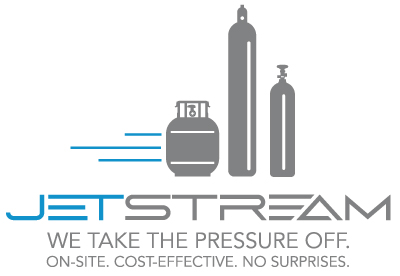 If your company or organization works with compressed gas cylinders on a regular basis you have to understand how to store them safely. Many businesses use up several gas cylinders at a time before sending them back to be refilled by the supplier, that means that they are storing the extra tanks somewhere until they are ready to be used. If these cylinders aren’t stored properly they can be dangerous. Many of these cylinders are holding toxic or flammable gases, and most of the gases are pressurized at very high levels of pressure. One small mistake can cause serious hazards to people handling these tanks, or even people who are near the storage areas, and that’s why strict guidelines have to be followed when dealing with these cylinders.
If your company or organization works with compressed gas cylinders on a regular basis you have to understand how to store them safely. Many businesses use up several gas cylinders at a time before sending them back to be refilled by the supplier, that means that they are storing the extra tanks somewhere until they are ready to be used. If these cylinders aren’t stored properly they can be dangerous. Many of these cylinders are holding toxic or flammable gases, and most of the gases are pressurized at very high levels of pressure. One small mistake can cause serious hazards to people handling these tanks, or even people who are near the storage areas, and that’s why strict guidelines have to be followed when dealing with these cylinders.Create the Ideal Gas Cylinder Storage Location
The ideal storage location for potentially hazardous gas cylinders is ventilated well and very dry. Ventilation is important to keep any leaking gases from building up to dangerous levels. A dry environment helps keep the tanks from rusting which could potentially cause the valve caps to stick. The location should also be free from sunlight ideally, and away from any heat sources such as furnaces or open flames. Flammable cylinders should never be stored near a building exit, because a malfunction could trap people inside.
Organizing the Cylinders
There is a certain level of organization that has to exist with gas cylinder storage. They need to be grouped by the hazard type that they have. For instance all of the flammable cylinders should be kept in one location away from cylinders of other hazard types. Full cylinders should be kept away from empty ones as well. This helps avoid confusion and keeps things more organized. Always make sure there is at least 20 feet between flammable cylinders and oxidizer cylinders to prevent a potential explosion. Large signs should be placed in each of the different locations, letting everyone know what types of cylinders are stored in the location.
Placing the Cylinders in Storage
Always place the cylinders in a setup that allows you to pull the oldest cylinders of each type out for use first. Avoid storing a cylinder at your location for more than a year at a time. If you have a cylinder for more than a year it should be sent back to the supplier.
All the cylinders should be firmly held in place with chains that are higher than the mid-point but lower than the collar. Up to three different cylinders can be held with a set of two chains as long as they are stored alongside one another. Small cylinders that are less than 18 inches in height can be held in place with a stand instead of chains as long as it has been approved for that purpose. The cylinders should always be stood up with the valve facing the ceiling of the building.
Before the cylinders are placed into storage they should be inspected to make sure there are no leaking hazards. The label on the tank should be verified as well. Always remove the regulator from any tank and place the vale cap in place before placing it into gas cylinder storage. Since the valve of a cylinder is its weakest point it’s vital to protect it as much as possible.
By getting to know the guidelines that go along with gas cylinder storage you can make sure your company is keeping its cylinders in a safe location. Following the guidelines may sound like a lot of work, but the extra work is worth it to keep everyone involved safe.
Contact us for a FREE consultation and estimate on compressed gas cylinder cleanup and disposal that will reduce your risk and improve your bottom line.

